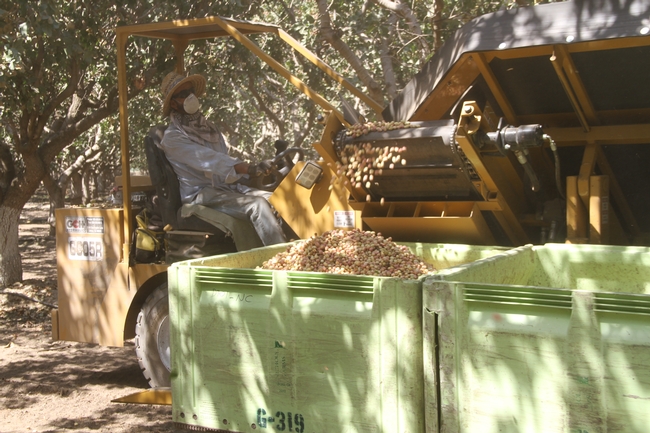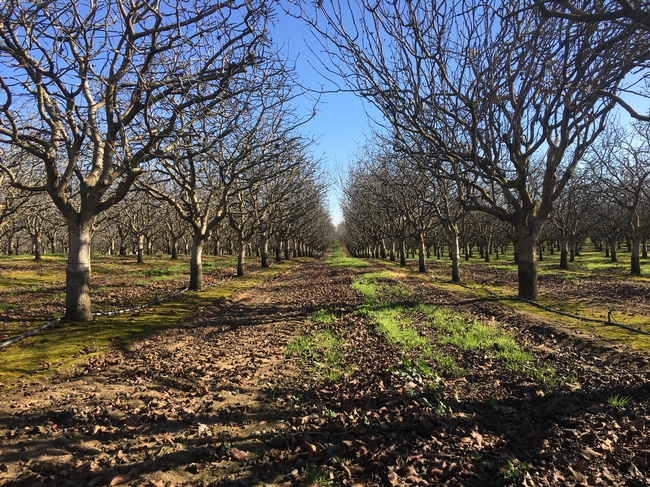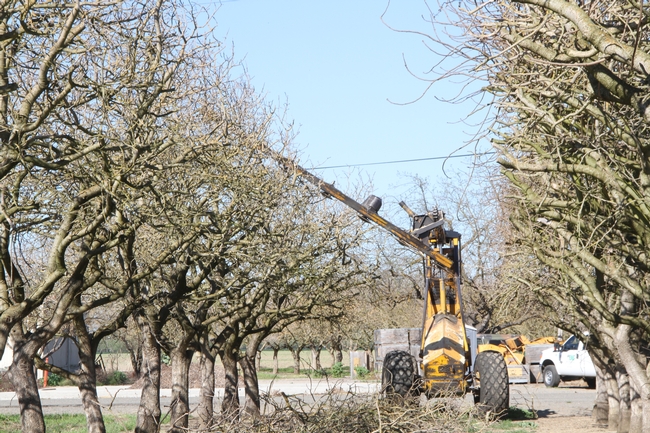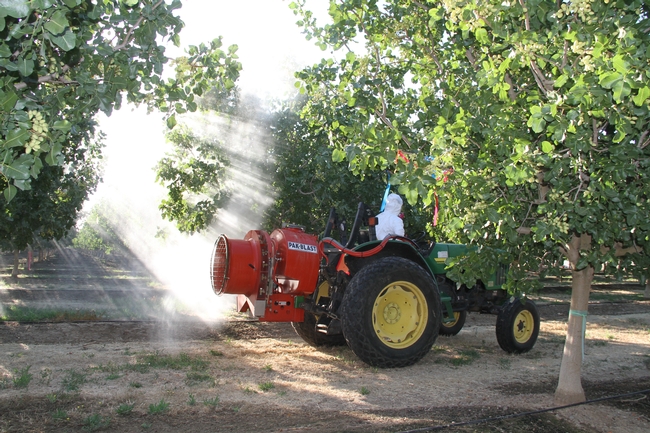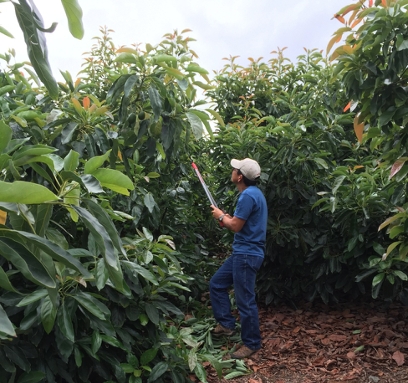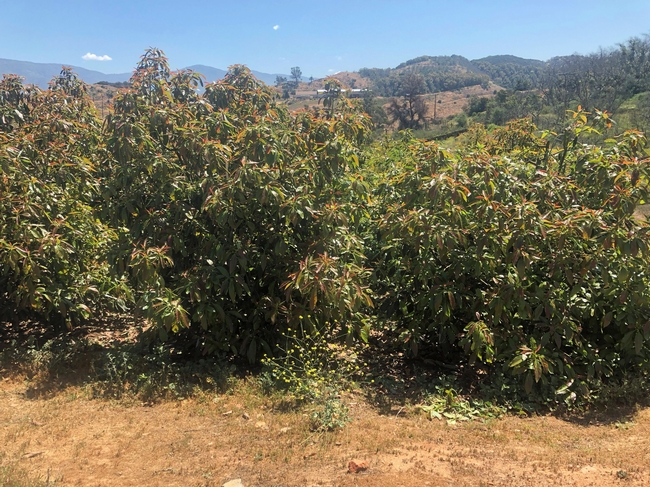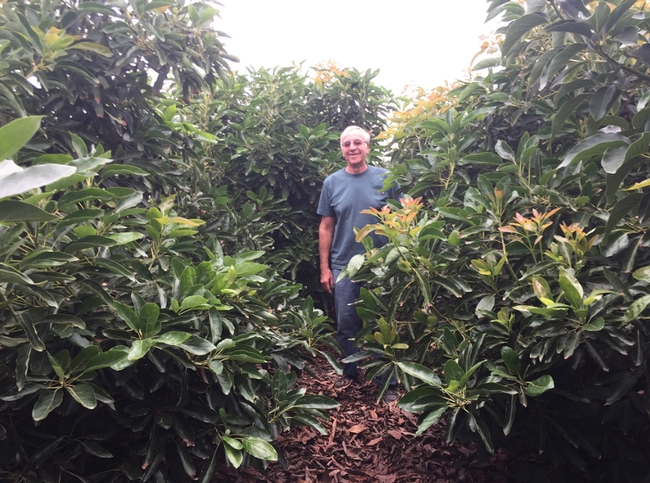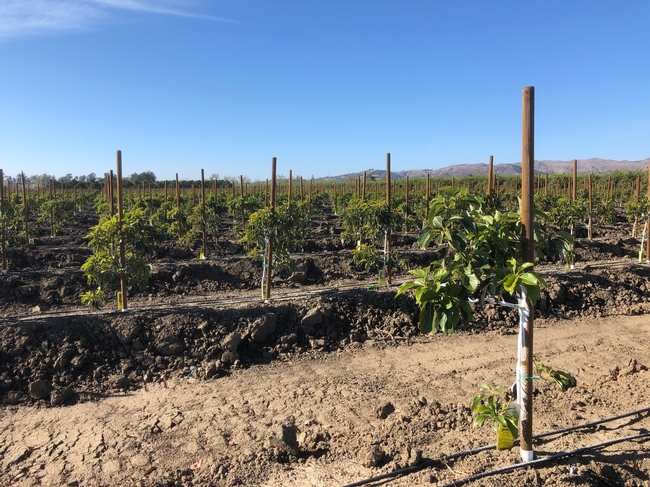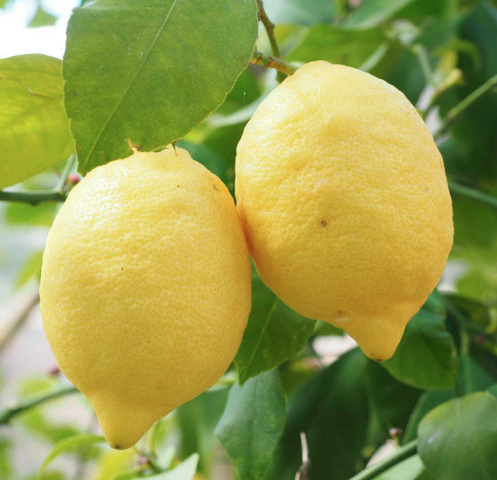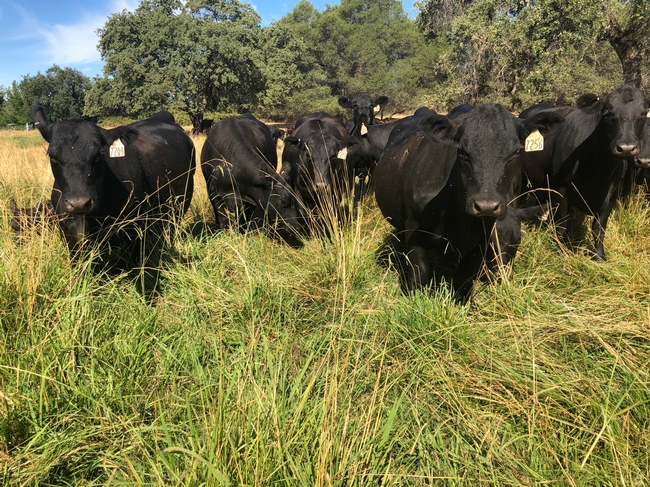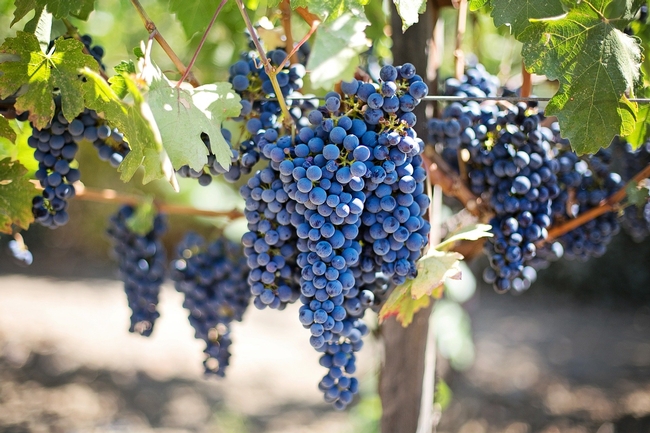
Posts Tagged: Agricultural Issues Center
Pistachio production costs outlined in UC study
The popularity of pistachios as a healthy snack continues to drive demand. California's pistachio crop was valued at $1.94 billion in 2019, according to the California Department of Food and Agriculture.
For growers considering planting an orchard, the costs and returns of establishing and producing pistachios in the southern San Joaquin Valley are outlined in a new study by UC ANR's Agricultural Issues Center, UC Cooperative Extension and the UC Davis Department of Agricultural and Resource Economics.
“New growers use this information to create their budget for production loans for their bank,” said Jeffrey Gibbons, plant manager of Setton Pistachio of Terra Bella. “Owners use this information so they can be assured their farm managers are not overcharging them for farming costs. Farm managers use this information to see how they compare to the industry. Setton Pistachio uses this information to project budgets for future planting scenarios.”
UC Cooperative Extension specialists and farm advisors routinely refer people interested in planting pistachios to the cost study.
“I use this every time I have a new grower,” said Louise Ferguson, UC Cooperative Extension specialist in the UC Davis Department of Plant Sciences and co-author of the study. “It not only gives a good estimate of establishment and production costs, and projected net returns, but ensures no details are missed in planning. It is an invaluable template for pistachio production.”
Elizabeth Fichtner, UC Cooperative Extension orchard systems advisor for Kings and Tulare counties, agreed. “The cost study documents are one of the first resources I assemble for new growers.”
The new study estimates the costs and returns of establishing and producing pistachios using low-volume drip irrigation in the southern San Joaquin Valley. The hypothetical orchard is planted at 128 trees per acre, with an expected life span of 40 years.
The authors describe the assumptions used to identify current costs for pistachio establishment and production, material inputs, cash and non-cash overhead and a ranging analysis table, which shows profits over a range of prices and yields.
"Pistachio growers, potential future growers, land leasers, appraisers and loan officers benefit from detailed and current information included in the studies,” said Craig Kallsen, UCCE citrus and pistachio farm advisor for Kern County.
Gibbons said, “Setton Pistachio refers potential growers to this information as they determine if they want to plant pistachios. Setton Pistachio appreciates this information if it is current. If it is too old, it is not reliable, and there is no other good source for unbiased pistachio development information.”
For a grower, deciding not to plant pistachios based on information in the cost study can be just as economically valuable as deciding to plant pistachios based on the cost study, said Kallsen.
“The information in the cost study can prevent a grower from making a million-dollar mistake by planting a crop that is not suitable for their soil, water availability or for an economic reason not related to crop environment/adaption suitability such as length of time to first harvest or high cost of establishment,” he said.
Reliable estimated costs for a crop grown mostly in California may be hard to find from a source other than UC. This study was co-authored by 17 UCCE farm advisors and specialists and a pomology professor at California State University, Fresno, with input from growers.
“This study summarizes the knowledge learned and used to build California's pistachio industry from 40,000 acres in the 1970s to over 400,000 acres and a 1.1-billion-pound crop in 2020,” Ferguson said.
The new study, “Sample Costs to Establish and Produce Pistachios, Low-Volume Irrigation, San Joaquin Valley South - 2020” can be downloaded for free from the UC Davis Department of Agricultural and Resource Economics website http://coststudies.ucdavis.edu. Sample cost of production studies for many other commodities are also available on the website.
“UC cost studies are always something I alert potential growers to when they are considering whether to plant an orchard,” said Phoebe Gordon, UC Cooperative Extension orchard crops advisor for Madera and Merced counties. “New growers have expressed to me a few times that they find the cost study useful.”
For an explanation of calculations used in the study, refer to the section titled Assumptions. For more information contact Donald Stewart, University of California Agriculture and Natural Resources, Agricultural Issues Center, Department of Agricultural and Resource Economics, at (530) 752-4651 or destewart@ucdavis.edu. To discuss this study with a local UC Cooperative Extension advisor, find the UC Cooperative Extension office in your county at https://ucanr.edu/About/Locations.
New avocado study outlines costs and returns of high-density plantings
Growers considering producing avocados in San Diego County with high-density plantings now have help to determine the economic feasibility. A new study on the costs and returns of establishing and producing avocados in San Diego County has been released by UC Agriculture and Natural Resources' Cooperative Extension, UC Agricultural Issues Center and the UC Davis Department of Agricultural and Resource Economics.
Avocado has been one of the prominent crops produced in Southern California since the early 1950s. California avocado production peaked in 1987-88 with about 76,300 acres. San Diego had been the leading producer accounting for about 60% of the acreage.
“Beginning in the early 1980s, there has been a continuous decline of acreage and production of avocados in San Diego County, said Etaferahu Takele, UC Cooperative Extension farm management advisor for Southern California and co-author of the study. “This is mainly because of the expansion of urban development that has increased the cost of producing the crop and especially the cost of water, reaching to up to $2,000 per acre feet in 2020.”
High-density planting increases profitability of avocado production given there is suitable land for high-density orchard development.
Although the cost of water accounts for 44% of the total production cost in the high-density planting, the water cost is proportionally less than in the conventional planting of 145 trees per acre when distributed over a higher yield per acre, the authors write.
Their cost analysis describes production operations for avocados planted at 430 trees per acre, with an expected life span of 40 years. The study includes a detailed summary of costs and returns and a profitability analysis of gross margin, economic profit and a break-even ranging analysis table, which shows profits over a range of prices and yields. Growers can identify their gross margin and returns to management based on their yield and prices received.
Input and reviews were provided by a UC Cooperative Extension farm advisor and grower cooperators in San Diego County. The authors describe the assumptions used to identify current costs for avocado establishment and production, material inputs, cash and non-cash overhead.
The new study, “Avocado Establishment and Production Costs and Profitability Analysis in High Density Planting, San Diego County-2020,” can be downloaded for free from the UC Davis Department of Agricultural and Resource Economics website at http://coststudies.ucdavis.edu and UCCE Riverside County Farm Management website at https://ucanr.edu/sites/Farm_Management/Costs_and_Returns. Sample cost of production studies for many other commodities are also available on the websites.
For additional information or an explanation of the calculations used in the studies, refer to the “Assumptions” section of the report or contact Takele at (951) 683-6491 Ext. 243 or ettakele@ucanr.edu or Donald Stewart at the UC Agricultural Issues Center at destewart@ucdavis.edu.
UC ANR study outlines costs and returns of producing lemons in Southern California
A new study on the costs and returns of establishing and producing lemons in Ventura County has been released by UC Cooperative Extension in Southern California and UC Agricultural Issues Center, both part of UC Agriculture and Natural Resources.
“Coastal agriculture is always in transition and as strawberries and vegetables become less profitable due to markets and labor availability, lemons have returned as a potentially profitable alternative to those crops,” saidBen Faber, UC Cooperative Extension farm advisor for Ventura County and coauthor of the study.
California lemon acreage was at roughly 47,000 acres in 2018-19, of which Ventura County accounts for 31%, according to the 2019 Ventura County Crop Report. Ventura County was growing lemons on 14,407 acres in 2019.
“The profitability of lemon production depends on the price of land,” said Etaferahu Takele, UC Cooperative Extension farm management advisor for Southern California, another coauthor of the study. “If the price of land continues in its current trend, it could be prohibitive for new entrants to make a profit and limit further expansion of lemon production in the county.”
Their cost analysis describes production operations for Eureka lemons on macrophylla rootstock, which are planted at 155 trees per acre with an expected life span of 40 years.
The study includes a detailed summary of costs and returns and a profitability analysis of gross margin, economic profit and a break-even ranging analysis table, which shows profits over a range of prices and yields.
Input and reviews were provided by Ventura County farm advisor and grower cooperators. The authors describe the assumptions used to identify current costs for lemon establishment and production, material inputs, cash and non-cash overhead.
The new study, “2020 - Sample Costs to Establish and Produce Eureka Lemons in Ventura County,” can be downloaded for free from the UC Davis Department of Agricultural and Resource Economics website at http://coststudies.ucdavis.edu and the UCCE Riverside County Farm Management website at https://ucanr.edu/sites/Farm_Management/files/338947.pdf. Sample cost of production studies for many other commodities are also available on the websites.
For additional information or an explanation of the calculations used in the studies, refer to the section of the report titled “Assumptions” or contact Takele at (951) 683-6491 Ext. 243 ettakele@ucanr.edu or Donald Stewart at the UC Agricultural Issues Center at (530) 752-4651, destewart@ucdavis.edu.
For information about production of lemons in Ventura County, contact Faber at bafaber@ucanr.edu.
New UC studies outline costs of producing irrigated pasture in the Sierra Nevada foothills
Two new studies on the costs and returns of establishing and producing irrigated pasture in the Sierra Nevada Foothills have been released by UC Agriculture and Natural Resources' Agricultural Issues Center. Ranchers in Nevada, Placer and surrounding counties may find the cost estimates useful for planning.
Based on 40 acres of leased ground, the studies focus on establishment by tilling the soil, using conventional cultural practices and re-establishment of pasture using no-till cultural practices. The two separate studies, by Dan Macon, UCCE livestock and natural resources advisor, and Donald Stewart of the Agricultural Issues Center, estimate the cost of establishing or re-establishing a pasture and producing pasture over its 30-year life span.
There are two methods of establishing a pasture. One method uses conventional cultural practices, destroying the existing pasture and preparing the soil, or seed-bed, using conventional tillage practices.
The other no-till method of re-establishing the pasture uses high-intensity grazing and herbicides to destroy the existing pasture and plant new pasture using a no-till seed drill.
Their analysis reports the differences of machinery costs and methods. The reported prices for materials, equipment and custom services are based on January 2020 figures.
UC Cooperative Extension farm advisors, specialists, grower cooperators and other agricultural associates provided input and reviews. The authors describe the assumptions used to identify current costs for pasture establishment and production, material inputs, cash and non-cash overhead. A ranging analysis table shows profits over a range of prices and hay yields.
The new studies are “2020 - Sample Costs to Establish or Reestablish and Produce Irrigated Pasture in the Sierra Nevada Foothills, Flood Irrigated” and “2020 - Sample Costs to Produce Irrigated Pasture in the Sierra Nevada Foothills, Flood Irrigated.”
Both studies can be downloaded from the UC Davis Department of Agricultural and Resource Economics website at http://coststudies.ucdavis.edu. Sample cost-of-production studies for many other commodities are also available on the website.
For additional information or an explanation of the calculations used in the studies, contact Donald Stewart at the Agricultural Issues Center at (530) 752-4651 or destewart@ucdavis.edu.
For information about irrigated pasture establishment and production in Placer, Nevada, Sutter and Yuba counties, contact UCCE livestock and natural resources advisor Dan Macon at dmacon@ucanr.edu.
Agriculture to take a hit, but people still need to eat during coronavirus crisis
The shut downs and self isolation sweeping across the country to curb the spread of coronavirus likely will not impact agricultural staple foods, but high-end wines and specialty ag products grown in California may suffer, reported Tim Hearden in Western Farm Press.
Hearden interviewed Dan Sumner, director of UC Agriculture and Natural Resources' Agricultural Issues Center.
He said some California agricultural products see demand increase during tough economic times, such as less expensive wines.
“Central Valley grapes are nearly recession-proof,” he said. “When the stock market collapses or the dot-com busts, nobody's buying $200 bottles of wine anymore.”
Sumner said Midwestern corn and grains will hold their own, however California products like almonds, pistachios, walnuts, strawberries, raspberries and even some leafy greens may "slip off the plate."
Wine sales may also be hurt by California Gov. Gavin Newsom's decision to close winery tasting rooms, restaurants, bars and pubs. Wineries are allowed to remain open for pick-up and winery business and production operations.
Hearden noted in his article that many UC Cooperative Extension workshops and other ag-related public events were canceled, including Ag Day festivities at the state Capitol that were set for March 18.

